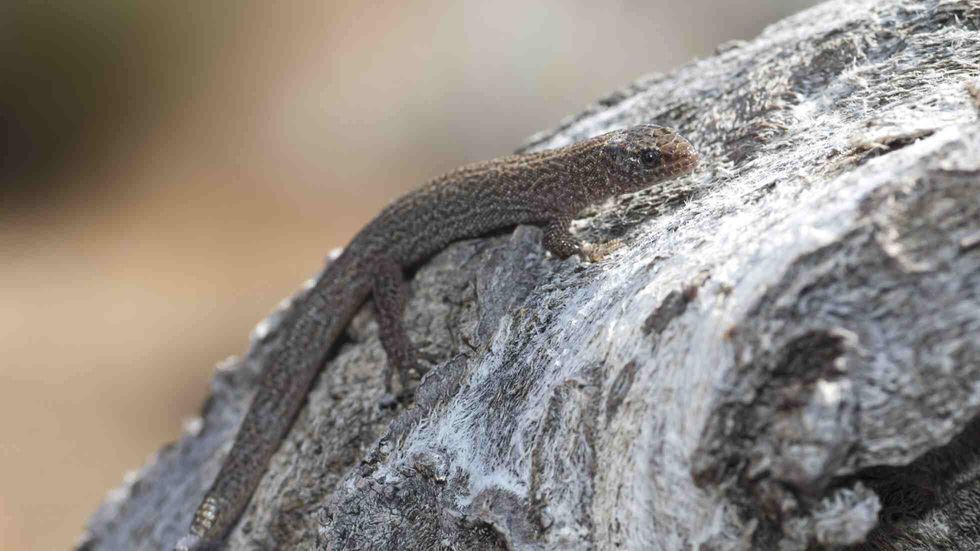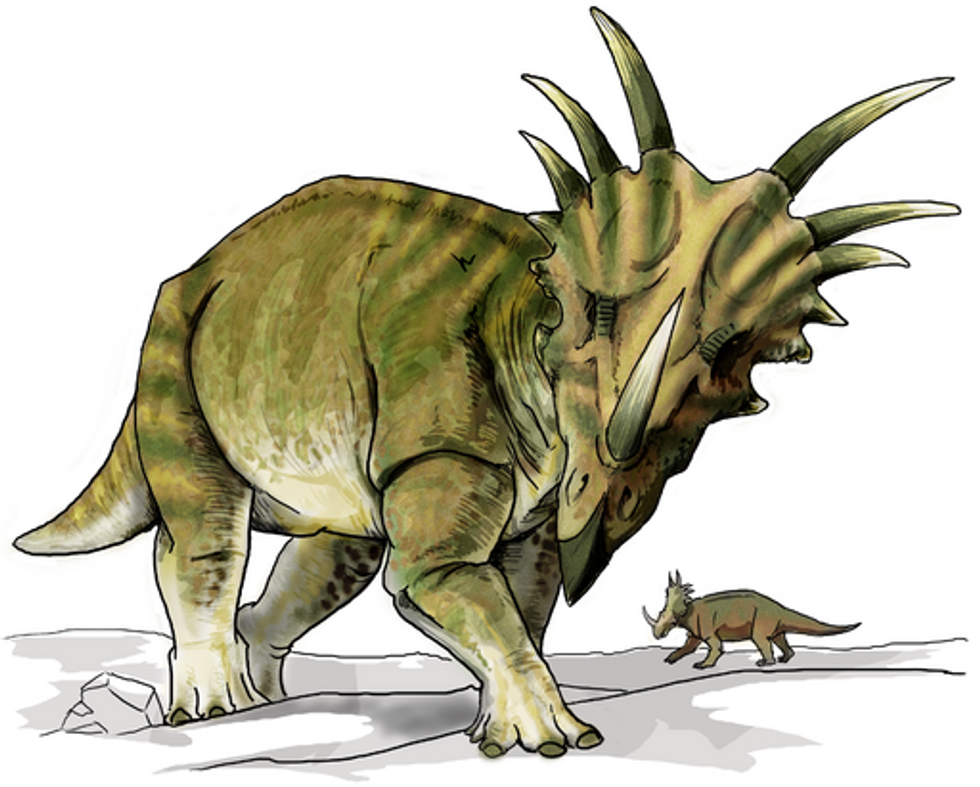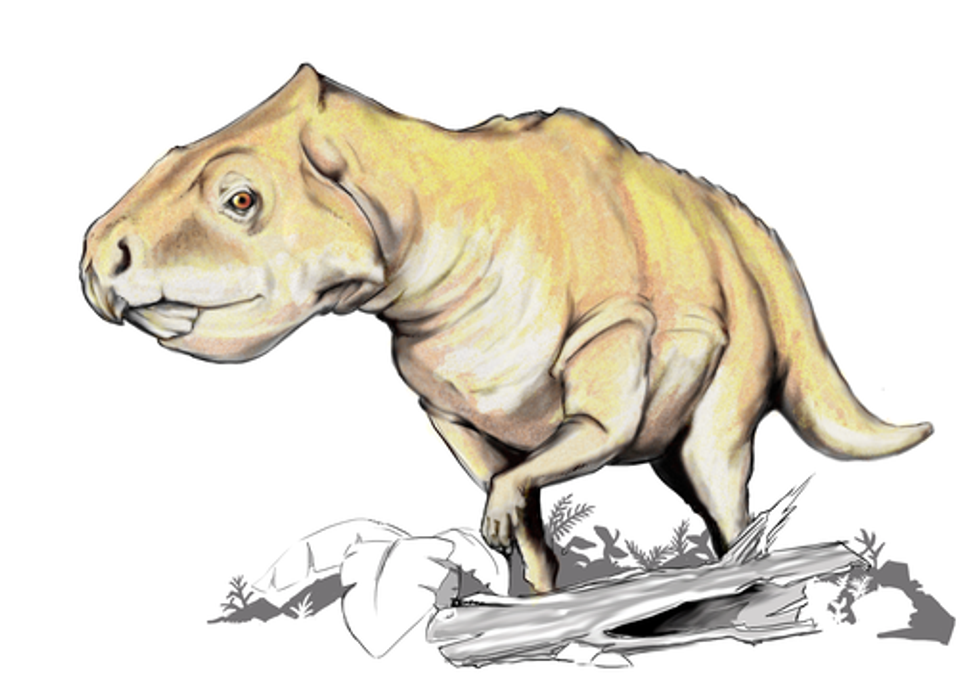Exploration experts have found a unique species of lizards in the desert that lives in family groups and shows social, behavioral patterns commonly found in mammals and birds.
The desert night lizard (Xantusia vigilis) is a grey, yellow-brownish, or olive-colored lizard. The snout to vent is 1.5-2.75 in (3.8-7.0 cm). They spend most of their life hiding in secrecy under fallen vegetation and litter of trees. For example, in joshua, logs, pine bark, dead yucca clumps, Mojave yucca, banana yucca, and under the rocks.
When frightened, it narrowly escapes and hides away in the nearest undercover spot. Sometimes, while escaping from predators, it breaks off its tail. The tail continues to shake as the lizard flees.
Want to know more about western reptiles and amphibians? Here are some fascinating facts about the desert night lizard (Xantusia vigilis). Also, read these exciting facts about mole snake and frilled lizard.
Desert Night Lizard Interesting Facts
What type of animal is a desert night lizard?
Although the name suggests night lizards are night creatures, they are diurnal and crepuscular, which means they are active during the day, too. Desert night lizards (Xantusia vigilis) are nocturnal during the summer season and diurnal during the winter months. The desert night lizard species can change their color from light olive to dark brown during the day.
The desert night lizard species are excellent climbers. Their diet comprises small insects, spiders, termites, and other arthropods. You can learn more about the life history of reptiles and amphibians in the field guide of Arizona.
What class of animal does a desert night lizard belong to?
Desert night lizards are reptiles. They belong to the class Reptilia and family Xantusiidae.
How many desert night lizard are there in the world?
The exact number of desert night lizards is unknown. However, there are 26 species of night lizards.
Where does a desert night lizard live?
The desert night lizard (Xantusia vigilis) lives in the desert. They prefer arid and semi-arid habitat regions.
The desert night lizard subspecies is native to southern California, Baja California, San Gabriel Mountains, San Clemente Island, southern Nevada, southwestern Utah, East Sierras, western Arizona, and northwestern Mexico. However, they've extended its habitat range in almost all parts of the arid regions of the USA.
What is a desert night lizard's habitat?
The desert night lizard (Xantusia vigilis) prefers arid and semi-arid habitat regions. During the day, they hide near rocks and rock crevices, under the fallen leaves and branches of yucca such as Joshua tree, Spanish Bayonet, and Spanish Dagger. Its range extends from southern California into southern Nevada, Arizona, and southwestern Utah.
You can read more about reptiles and amphibians in the California Natural History field guide.
Who do desert night lizard live with?
The desert night lizard lives in pairs or with family.
How long does a desert night lizard live?
The (Xantusia vigilis) desert night lizard subspecies has a lifespan of around 20 years.
How do they reproduce?
The reproduction process of the desert night lizard, like all other night lizards, is viviparous, which means they give birth to one to three young ones from August to December.
An unusual characteristic of the desert night lizard (Xantusia vigilis) is that they form family social groups comprising a father, mother, and offspring. Even though the young can feed themselves, they are together with their family, and young ones do not receive any care from their parents. The advantage of staying with their parents is unknown.
The young lizards can camouflage well, and their size is similar to that of a toothpick.
What is their conservation status?
The conservation status of desert night lizard is Least Concern.
Desert Night lizard Fun Facts
What do desert night lizard look like?

From snout to vent, the size of a desert night lizard is 1.5-2.75 in (3.8-7.0 cm) and has a tail of the same length. The tip from snout to vent is quite long.
The Desert night lizard (Xantusiidae vigilis) reptiles are small and thin lizards with a gular fold. It has soft skin with granular scales, and the head is covered with large plates.
The eyes do not have lids, and their pupils are vertical in shape. They have around 30-50 dorsal scales in lengthwise rows in the middle of their body.
Desert night lizard reptiles are olive, grey, or yellow-brownish with light brown and dark spots or narrow stripes. A narrow beige line, edged in dark brown or black, starts from the eye till the shoulder. The underpart is white, comprising of large square scales with twelve rows.
How cute are they?
No, desert night lizards are not cute to most people, although it is subjective. This subspecies face has a snake-like appearance.
How do they communicate?
Desert night lizards reptiles use different modes of communication like vocal, visual, tactile, and chemical.
In visual communication, lizards try to gather information by observing other lizards' physical and behavioral characteristics. In chemical communication, lizards produce chemicals like pheromones. Finally, in tactile communication, lizards communicate directly and indirectly.
How big is a desert night lizard?
The desert night lizard is around 1.5-2.75 in (3.8-7.0 cm) length from snout to vent.
The desert night lizard is two times bigger than the Virgin Islands dwarf sphaero.
How fast can a desert night lizard swim?
The exact speed of the desert night lizard on the water is not mentioned. However, the common basilisk lizard runs on water like amphibians at an average speed of 15 mph (24.1 kph).
How much does a desert night lizard weigh?
The weight of the Desert night lizard is not mentioned. However, the smallest lizard Virgin Islands dwarf sphaero weighs around 0.0053 oz (90.15 g).
What are their male and female names of the species?
Female species are known as female desert night lizards, and male species are known as male desert night lizards.
What would you call a baby desert night lizard ?
A baby desert night lizard is known as a juvenile.
What do they eat?
The diet of night lizard (Xantusiidae vigilis) species consists of termites, small insects, beetles, crickets, caterpillars, and spiders.
Are they poisonous?
Night lizards are not poisonous. Therefore, this species is not harmful to humans.
Would they make a good pet?
Yes, the desert night lizard would make a good pet. Many people's first pet reptile is a lizard. Ensure you provide them with a lizard cage that has rocks and rock crevices since they are secretive animals.
Did you know...
A unique fact about the desert night lizard is that they can break off their tail to escape an enemy. The released tail shakes for about four minutes like a living creature.
This feature helps them to distract their predators. The predator is found holding its tail while the lizard flees away, saving its life. This process of dropping the tail is known as autotomy.
Losing its tail does not cause much harm. Although it might suffer from the stress of attack by its predators, they also lose the fatty energy deposited in the tail and have difficulties finding a mate due to the unhealthy appearance during the mating season.
Though the dropped tail grows back, it is not as perfect as the original one.
What are the lizards that come out at night?
Yes, some desert lizard reptiles are nocturnal. Leopard geckos are medium-sized geckos. They are native to western India, Afghanistan, and Pakistan.
Tokay geckos (Gekko gecko) are the largest gecko species. They belong to the family Gekkonidae. They are native and range from southern to southeast Asia.
Desert night lizards also come out at night during summer. Their range extends throughout the southwestern United States, Arizona, Nevada, and northwestern Mexico.
Prehensile-tailed skinks, also known as the monkey-tailed lizard, are another night lizards. They range from the Solomon Islands and Papua New Guinea to northeast Australia in the Pacific Ocean.
Where do lizards sleep?
Most lizards are diurnal, they are active during the day, and at night they are inactive. So yes, some lizards are active during the night.
While choosing a place to sleep, lizards need to avoid exposing themselves to potential predators. Therefore, you will often find them sleeping in secretive places.
In the house, they often hide in dark places. You will find the lizards sleeping on leaves or under the debris of trees of fallen leaves and branches of Yucca, Joshua tree, and Utah agave when outside. They sleep with their head towards the open route to watch out for predators.
Here at Kidadl, we have carefully created lots of interesting family-friendly animal facts for everyone to discover! For more relatable content, check out these other bog turtle facts or california kingsnake facts.
You can even occupy yourself at home by drawing one on our desert night lizard coloring pages.









